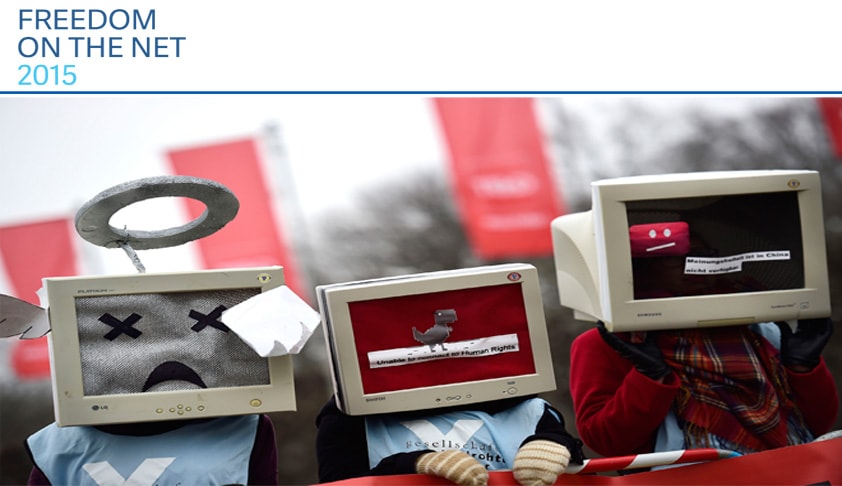CCG at NLU Delhi wrote the 2014-15 India report for Freedom House's global report on Freedom on the Net
LIVELAW NEWS NETWORK
29 Oct 2015 4:25 AM GMT

Internet freedom improved in India for the second consecutive year in 2015, even as more governments worldwide censored information of public interest and expanded surveillance, according to Freedom on the Net 2015, released today by Freedom House. The Supreme Court’s March 2015 ruling on the IT Act provided critical improvements to the legal framework protecting internet freedom.
“The Supreme Court’s ruling on the IT Act was a long awaited victory for free speech activists in India,” said Sanja Kelly, project director for Freedom on the Net. “
At the same time, network shutdowns in the name of security and a lack of transparency about blocking and surveillance are limits on internet freedom that kept the country’s rating “partly free.”
“In 2015, India’s internet users spoke out to defend net neutrality in record numbers, demonstrating a real commitment to equal, open access to online content,” said Madeline Earp, Freedom on the Net Asia research analyst. “Shutdowns and murky information about the authorities’ blocking and surveillance practices violate the same fundamental internet freedom principles.”
To view the full India report, which was authored by researchers at the Centre for Communication Governance at National Law University, Delhi , click here. "The Shreya Singhal judgment was a big step for internet freedom in India but it came from the judiciary. We hope that the information consolidated in this report is used by the government to develop better internet policy for Indian citizens", said Chinmayi Arun, Research Director of the Centre for Communication Governance at National Law University Delhi.
Globally, the study of internet freedom in 65 countries found that over 61 percent of all internet users live in countries where criticism of the government, military or ruling family has been subject to censorship online, and over 58 percent live in countries where bloggers or ICT users were jailed for sharing content on political, social, and religious issues.
Key Findings
Most censored topics: Criticism of the authorities was most likely to attract censorship or punishment. News about conflict, corruption allegations against top government or business figures, opposition websites, and satire were also subject to online censorship in over one third of the countries examined.
Content removals increased: Authorities in 42 of the 65 countries assessed required private companies or internet users to restrict or delete web content dealing with political, religious, or social issues, up from 37 the previous year.
Arrests and intimidation escalated: Authorities in 40 of 65 countries imprisoned people for sharing information concerning politics, religion or society through digital networks, up from 38 in last year’s report.
Surveillance laws and technologies multiplied: Governments in 14 of 65 countries passed new laws to increase surveillance since June 2014 and many more upgraded their surveillance equipment.
Governments undermined encryption, anonymity: Democracies and authoritarian regimes alike stigmatized encryption as an instrument of terrorism, and many tried to ban or limit tools that protect privacy.
China was the world’s worst abuser of internet freedom, followed by Syria and Iran. Since June 2014, 32 of the 65 countries assessed in Freedom on the Net saw internet freedom deteriorate. Notable declines were documented in Libya, France, and—for the second year running—Ukraine, amid its territorial conflict and propaganda war with Russia.
Internet freedom saw its biggest gains in Sri Lanka and Zambia, which both experienced recent change in government. Internet access became more affordable in Cuba after diplomatic relations were restored with the United States, but it remains out of reach for the majority.
To download the full report, including detailed chapters for the 65 countries covered, click here.

